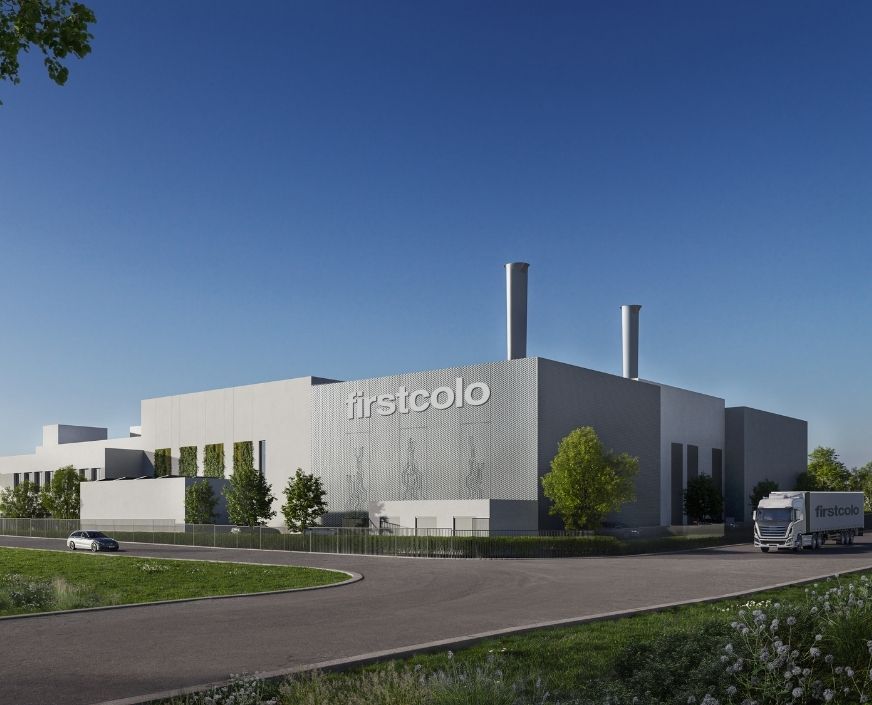Efficient Orchestration for Container-Based Applications
Frankfurt, January 29, 2024. Kubernetes and containers have taken IT by storm. Together, these technologies offer significant advantages to companies. They provide the opportunity to improve productivity in development and work across platforms. Since containerized applications don’t have their own operating system, they can run in any environment without modification. They also require less computing power and memory than virtual machines, offering substantial savings potential for businesses.
However, containers become more complex as the application grows larger. Especially in production environments, IT departments often need to install, deploy, and restart a large number of containers after outages and reconnect them to the outside world. “This only works with automated container orchestration. And this is where Kubernetes comes into play”, says Jerome Evans, founder and CEO of firstcolo GmbH.
Flexibility and Optimization
Kubernetes enables the management of container-based applications in a clustered environment combined with the automation of container management. This means it automates the administration and control of containers. Distributed components and services can thus be combined across infrastructures. “Users can scale applications individually, make adjustments flexibly, and optimize hardware usage. Only in exceptional cases do companies not benefit from the system”, Evans explains.
The technology was originally created by Google and later donated to the Cloud Native Computing Foundation (CNCF) for further development. Kubernetes as an application thus essentially offers the possibility to manage complex architectures such as microservice architectures very efficiently and securely in terms of performance and availability. “Especially in e-commerce or more complex SaaS architectures, it’s worth orchestrating with a Kubernetes cluster”, the expert explains. Target groups here can be IT decision-makers, DevOps engineers, or IT administrators, depending on the company size. The solution thus supports users who are fundamentally involved with deployments of the respective application.
Orientation to Needs
“Many entrepreneurs are following the ever-advancing containerization of the IT level through Kubernetes, but this is followed by the desire for simple implementation”, says Evans. About 56 percent of respondents in a representative survey by the market research institute CCS prefer complete container integration through third-party providers or an ensemble of providers and their own expertise due to the complexity of such an IT architecture [Source: Containers and Kubernetes Market Dynamics Report, Redhat].
Following this example and focusing on the end user, cloud service providers offer solutions that significantly simplify the handling of open-source systems such as firstkube. Users no longer need to demonstrate comprehensive know-how to manage containers. “This is made possible by a user-friendly interface and competent advice from an expert”, the expert adds. With firstkube, users also access all necessary services such as monitoring, compute, networking, as well as object, image, and block storage centrally via a graphical user interface (GUI).
Significant Efficiency Increase
In practice, the application of Kubernetes clusters is particularly suitable for automating the lifecycle of an online shop, as it minimizes manual tasks for IT administrators. This strategy allows for closer integration of the developer into the deployment process. However, the efficiency increase requires specific hard skills, as the alignment of a cluster must be done strategically. “Before starting a project, the crucial question is whether the existing architecture is Kubernetes-ready. Ideally, the online shop should have a microservices architecture or gradually transition to one to optimize order, performance, and availability”, Evans explains.
The support of an expert is often essential here. Key advantages of a Kubernetes solution are rapid scaling, significant efficiency gains, and flexible availability adjustments. Teams can work autonomously on their assigned containers, which is particularly advantageous in a microservices architecture.
However, a modern architecture – preferably in the cloud – is always a prerequisite for successful Kubernetes implementation. While on-premise options theoretically exist, they require more adjustments and maintenance effort. “Overall, however, in the best case, appropriate consultation and support from experts are needed to ensure smooth operation and effectively utilize the comprehensive advantages of Kubernetes”, Evans concludes.
Learn more about firstkube, the turnkey solution for easy Kubernetes utilisation via a single graphical interface.








